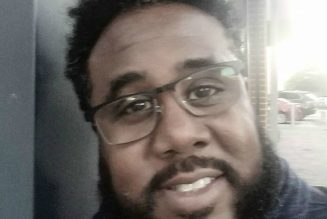
And the group was still hard at work on more new music: In June 2019, the members were in the studio with A$AP Rocky the day before he turned himself in to Swedish police following an alleged street brawl (and was subsequently held in detention for two months). Still, the group dragged its feet on releasing singles — it still felt the album was unfinished.
Then, everything stopped. The COVID-19 pandemic struck — and the Swedes, in a way, got what they wanted: much more time to work on the music. “Now we laugh about the early ideas,” says Angello. “We’re like, ‘Holy s–t — we were supposed to put that out?’ ”
The pandemic may have had some silver linings for artists, but the Swedes weren’t immune to its many downsides. Sweden never fully locked down and only recommended wearing masks in December — a controversial approach that has led to a death rate three times higher than its Nordic neighbors, though still lower than many other European countries — and in late March 2020, Ingrosso caught the coronavirus. He was sick for three months. “I had fever for 100 days,” he says, and wore a pulse oximeter “like all the time.”
In a world gone totally virtual, the trio’s nascent relationship with Columbia suffered, too. “We want to be in the room,” says Angello. “We’re on these FaceTime calls once in a while, and for us that means zero, you know?” Swedish House Mafia returned its advance — about $5 million, according to one person familiar with the deal — after the split, which a Columbia representative calls “mutual and very amicable.” In November 2020, the group parted ways with Laffitte as well. “The relationships all got disrupted by the inability to gather together,” says Laffitte, adding that everything was positive “until the world stopped.”
Swedish House Mafia’s bonds, on the other hand, slowly strengthened. The members gathered most days in either Axwell and Ingrosso’s studio in downtown Stockholm or Angello’s in the wooded outskirts of town. They made mood boards. (Quoth one: “If you want different results, try something different.”) Angello tinkered with his collection of custom synthesizers. (“The creative process is a little longer because we’re not super keen on software and presets of sounds,” he explains.) And sometimes, they just sat together, listening to music, including their collection of white labels dating back to when they started out. “We were going back in time, like, ‘Where did we come from? Who are we?’ ” says Ingrosso. “And just started to dig deep.”
The process involved its fair share of “anxiety, also,” continues Ingrosso. “It was tough — we’re getting older, obviously, and the whole EDM bubble for me has come to a point where nobody is taking risks, to be honest, including me.” The group’s famed perfectionism, he admits, “kills us also sometimes. But for us, it needs to be a certain way. And that’s why it takes time.” He recalls spending a year trying to find the right drum sound for one song — then deciding to mute the drums altogether. “And now, listening back to it, I’m like, ‘Wow, I’m so happy we did that.’ Sometimes, it’s like killing your biggest darlings is what makes the thing move forward.”











